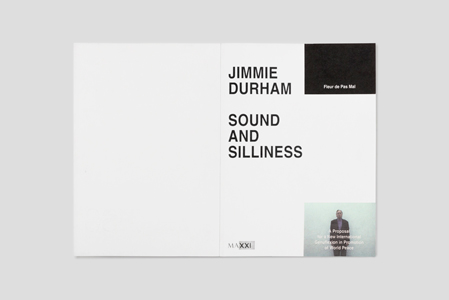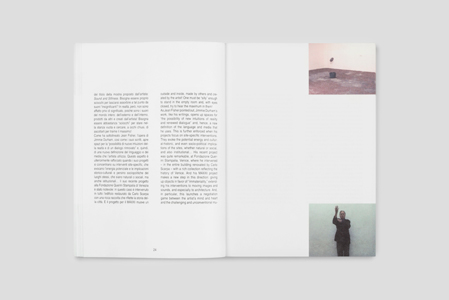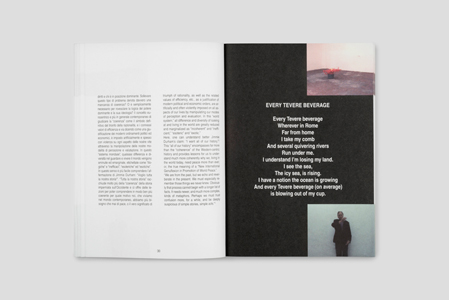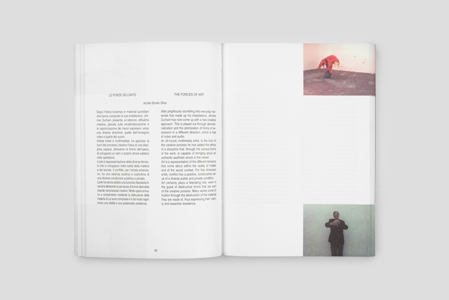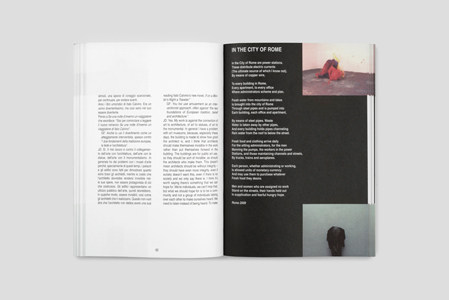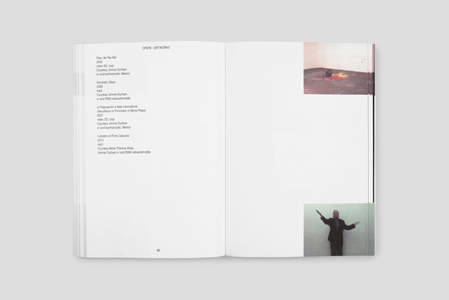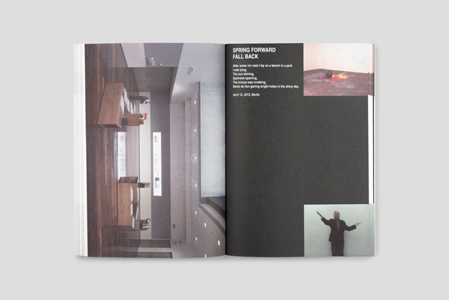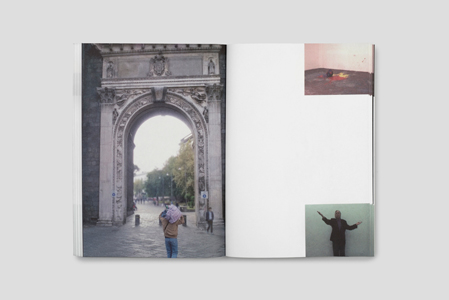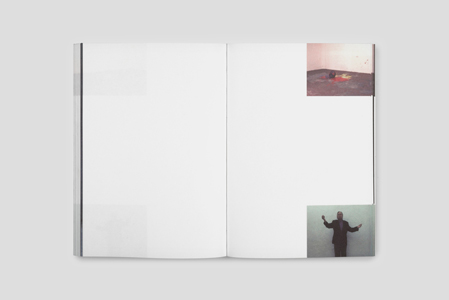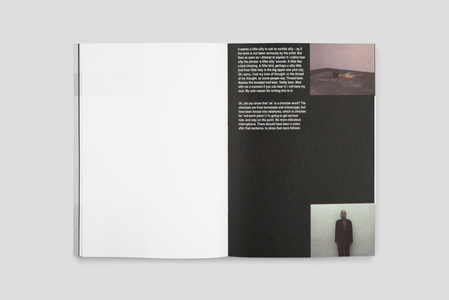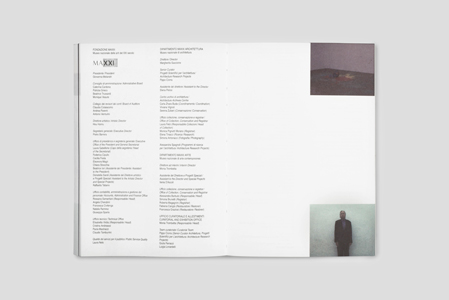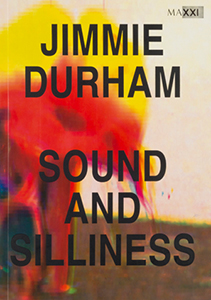
The flip-book is a primitive form of animation often used in children's books. It relies on the persistence of vision through which a sequence of frames is perceived as an illusory movement. In this way the book shapes the concrete nature of the works and their content whilst also playfully animates the poetic creation, intangible and elusive.
In the exhibition space of the MAXXI, Durham presented two audio works (Domestic Glass, 2006 and Swifts Porta Capuana, 2013) and two video works (Fleur de pas mal, 2005 and A Proposal for a New International genuflexion in Promotion of World Peace, 2007), respectively filmed and recorded in Italy. His works are a light-hearted response to the architecture of the museum and the city of Rome, where the relaxed approach of the author is intended as a gentle and peaceful response to important matters.
The original format of this publication, a hybrid between a catalogue and an artist's book, is the interpreter of this poetic attitude and of the central themes in Durham artistic work. The title of the book and of the exhibition was conceived as a reflection upon the nature of our actions: according to the artist, lightness can confer a kind of detached cockiness, useful in addressing the fundamental issues of life. “Maybe for me it is more a poem; not a chapter of a book but a poem in a book of poems; a poem that should give people a feeling rather than an education. […] And I would like to write poems or make art like this: the meaning is not translatable, is not text, is not metaphorical. Poetry, like art, means something else.”
The book contains two poems and a new song by Jimmie Durham, two critical texts by Achille Bonito Oliva and Hou Hanru and an interview of the artist by Giulia Ferracci.
Published following the eponymous exhibition at MAXXI, Rome, from February 5 to June 2nd, 2016.
Jimmie Durham (1940-2021) is one of the most influential artists, not least for younger generations of artists and curators. Of his art he said that it “works against the two foundations of the European tradition: Belief and Architecture.” Sculpture, seen as the coming together of object, image, and word, was fundamental to his practice, but he was also a poet, essayist, and educator.
Durham's life as an artist began in the mid-1960s in Texas. In the early 1970s he worked in Geneva. In the late 1970s he was a political organizer with the
American Indian Movement, Director of the International Indian Treaty Council and its representative to the United Nations. In New York around 1980 he turned once again to art. Between 1987 and 1994 he was based in Mexico, and thereafter in Europe, or, as he prefered to say, in Eurasia.


